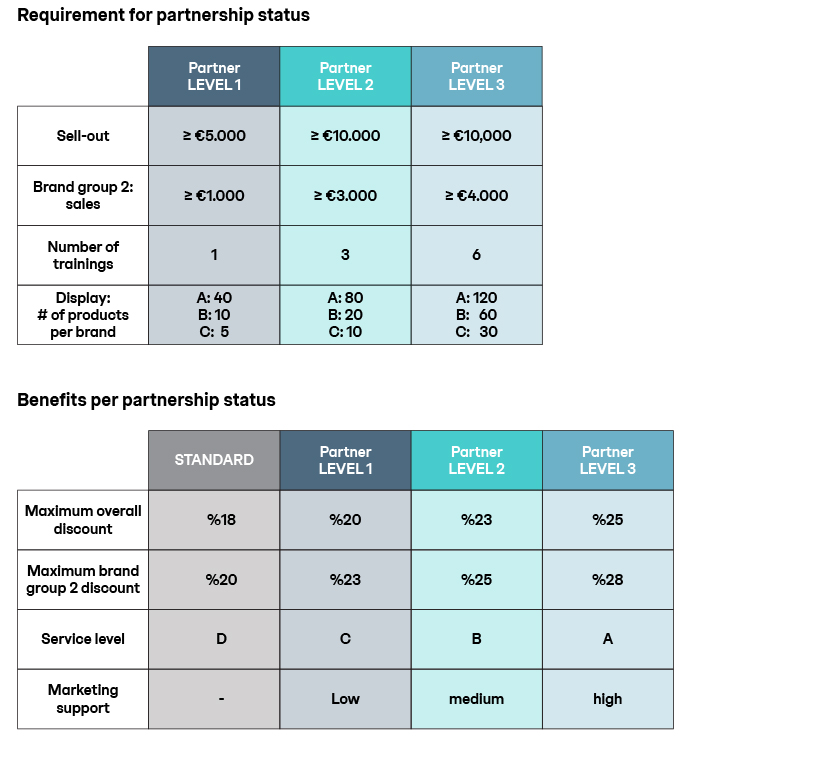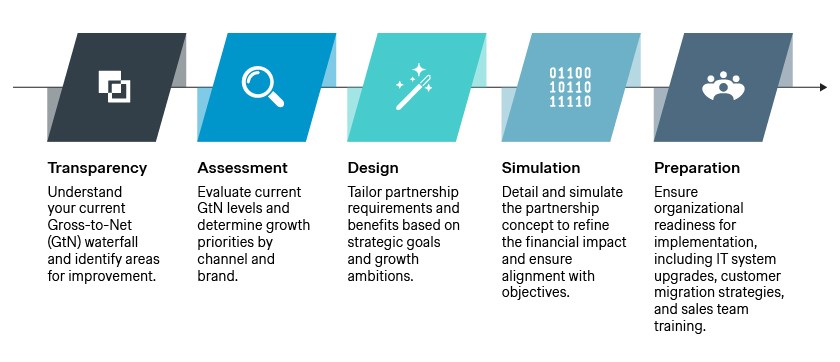Many consumer healthcare manufacturers are pivoting towards a strategic focus on sell-out, shifting away from traditional sell-in driven relationships. This transformation is driven by a desire to foster a deeper engagement with pharmacy partners and optimize sales outcomes. In this article, our Simon-Kucher experts explore partnership models – the option of choice to facilitate this transition by putting the consumer first.
We observe a shift towards sell-out in the consumer healthcare industry
Manufacturers are increasingly recognizing the limitations of the traditional sell-in mindset for their long-term marketing strategy, characterized by high stock pressure and a focus on order placement during sales visits. Outdated systems and cumbersome processes associated with sell-in strategies are simply proving ineffective in today's dynamic market landscape. Instead, there is a growing emphasis on sell-out drivers such as visibility, placement, and product recommendation.
Introducing partnership models
To support the transition towards sell-out focused strategies, a new breed of trade term systems is needed. Enter partnership models in consumer healthcare. These models draw inspiration from successful loyalty programs like airline frequent flyer schemes, offering different partner levels with tailored benefits and requirements. The core idea is to align incentives with strategic goals and sales targets, fostering a mutually beneficial relationship between manufacturers and pharmacy partners.
A partnership model could look like this:

Partnership models bring four key advantages
Partnership models offer various advantages that drive growth. Here are the key ones:
- Adaptability: Partnership models can be customized to align with your sell-out strategy, allowing for flexibility in defining requirements and benefits.
- Simplicity and Flexibility: By replacing complex trade terms with clear levels and streamlined processes, partnership models simplify the sales process while providing greater flexibility in configuring trade terms.
- Mindset Shift: These consumer healthcare partnership models promote a sell-out mindset, shifting sales discussions towards factors that drive actual consumer purchases such as visibility, recommendation, and seasonal stocking.
- Efficiency: By automating order taking and reducing administrative burdens, partnership models free up valuable sales time, enabling sales reps to focus on strategic discussions with pharmacy partners.
Partnership models yield tangible benefits
Implementing partnership models within the consumer healthcare sector has yielded tangible outcomes for both manufacturers and pharmacy partners:
- Incremental sales growth: Partnership models typically drive incremental sales growth without requiring additional investment, resulting in a higher return on investment for manufacturers in the consumer healthcare industry. For example, one of our customers reported 5% incremental growth thanks to the introduction of a partnership model!
- Increased customer satisfaction: Pharmacy partners appreciate the holistic set of benefits offered through partnership status, leading to higher satisfaction levels and stronger relationships. For example, at one of our customers, we saw an increase of the net promoter score by more than 1 point after the introduction of a partnership model!
- Enhanced sales pitch: Sales representatives report greater confidence and effectiveness in their sales pitch, armed with compelling arguments derived from partnership benefits. In one of our projects, one Sales rep reported: “The partnership model provides me with more and stronger arguments in my sales pitch!”
How to set up your partnership model: A quick guide
Follow these five steps to establish a successful partnership model:

Success factors to get it right
To maximize the effectiveness of partnership models, consider the following five success factors:
- Change Management: Facilitate a mindset shift among sales teams towards sell-out focused strategies.
- Sales Support Tools: Equip sales teams with CRM tools that provide visibility into partnership status and requirements.
- IT Automation: Automate IT systems to accurately reflect partnership statuses and track performance.
- Communication: Ensure full transparency to the pharmacy on their current and future partnership status (requirements vs. current performance, etc.) by making it a part of each sales visit.
- Incentive scheme: Align sales incentives with the goals of the new partnership model.
Reach out to our experts to learn more
Pharmacy partnership models offer a strategic framework for consumer healthcare manufacturers to drive sales growth and deepen relationships with pharmacy partners. By embracing these models and implementing them effectively, manufacturers can position themselves for sustained success in an evolving market landscape – fostering long-term partnerships and new revenue growth opportunities in the consumer healthcare market.
And our experts at Simon-Kucher are specialist in setting up partnership models also for you! Contact us today if you want to learn more.
Thanks to contributions by Christian Revsbech!








